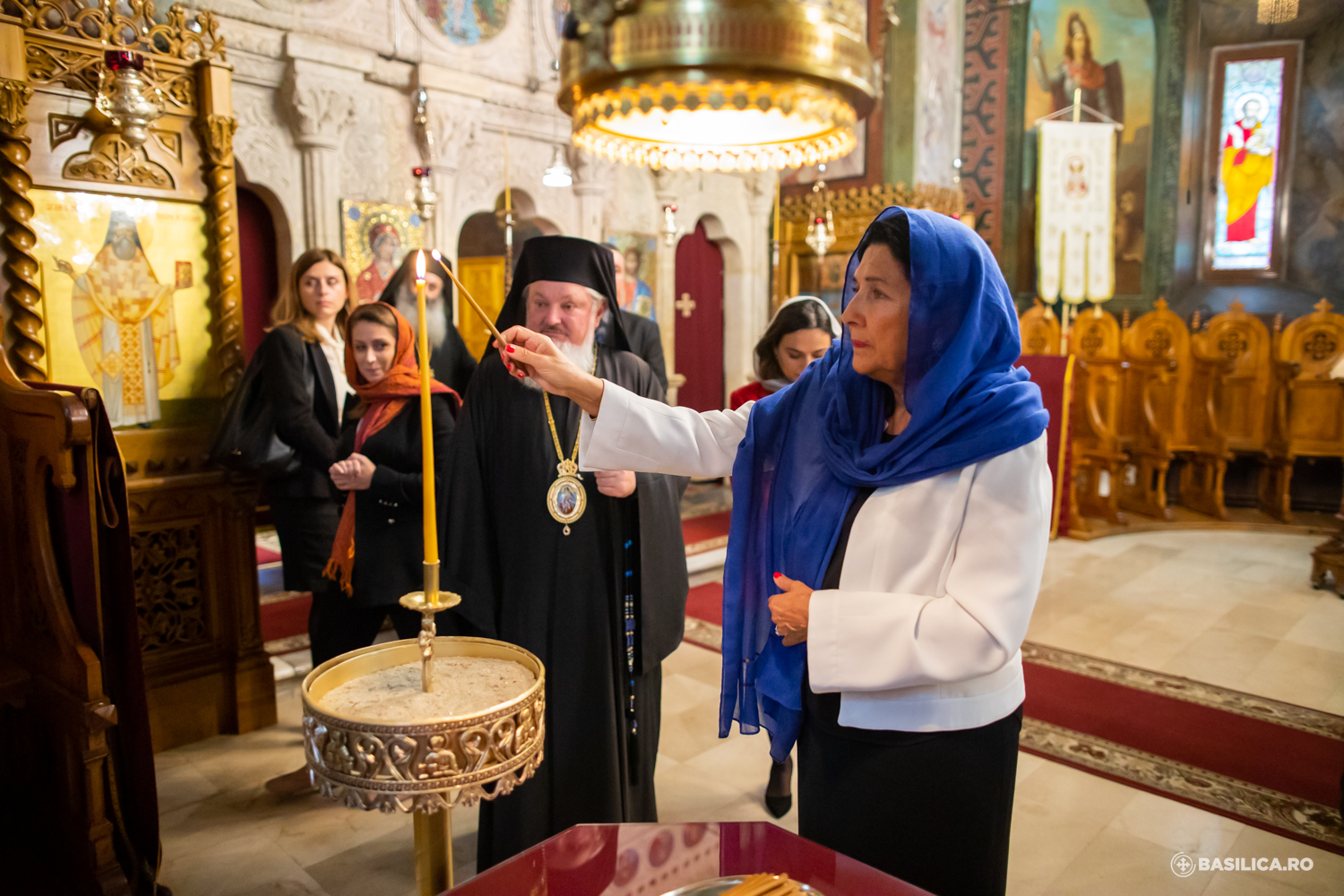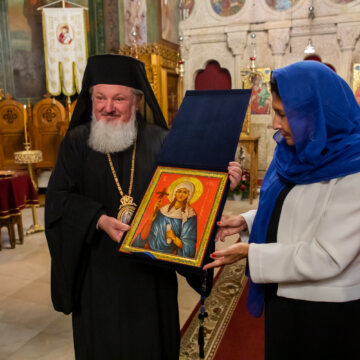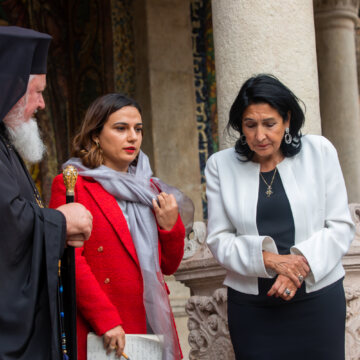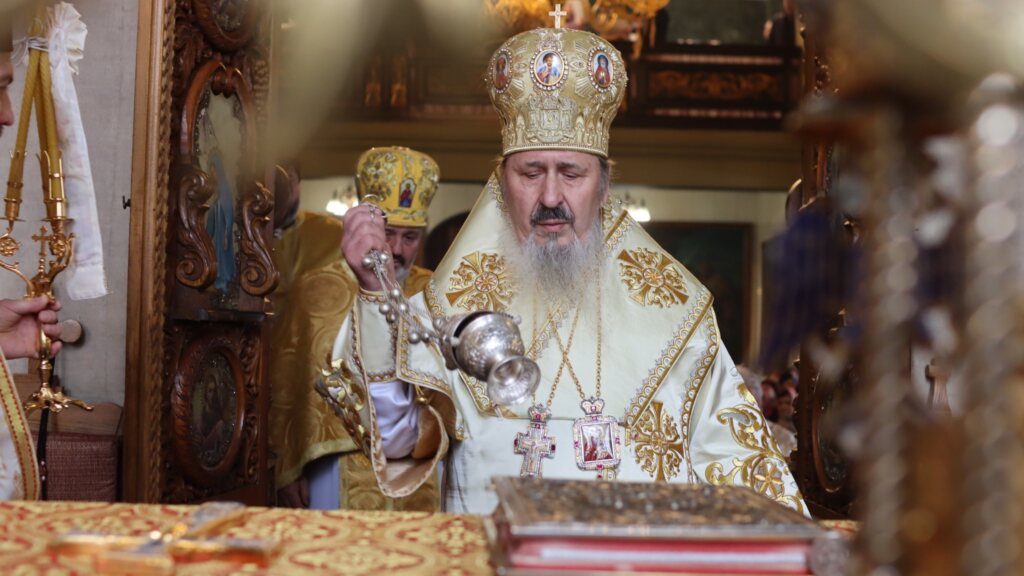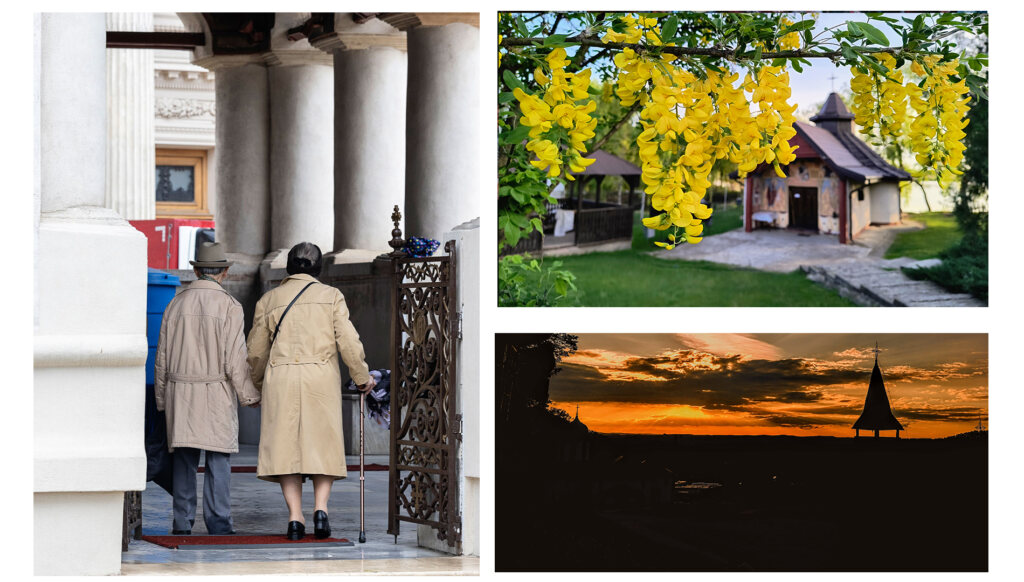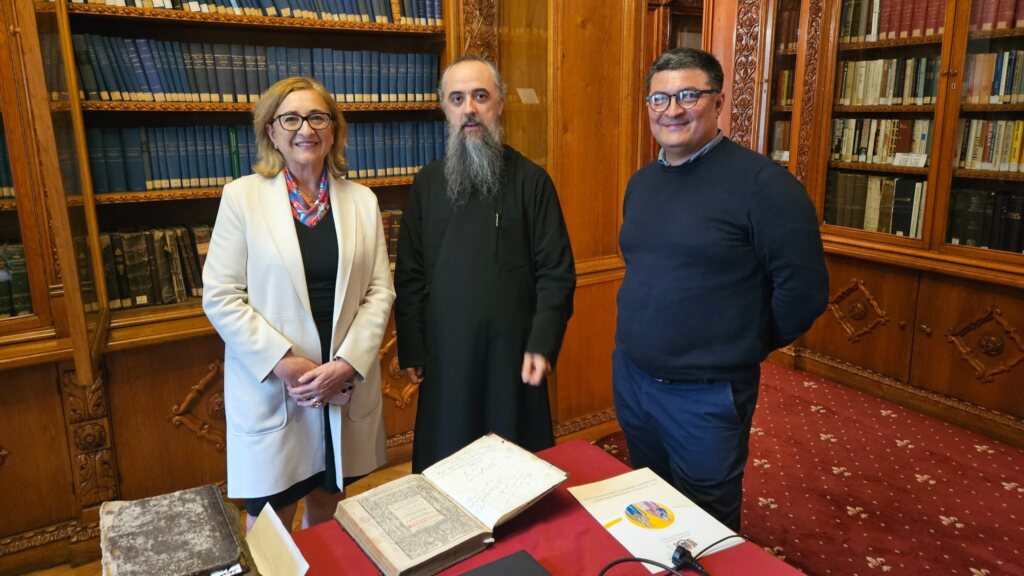On Tuesday, the Georgian President Salome Zourabichvili paid a visit to St Anthimos Monastery in Bucharest, a monastic settlement founded by Saint Anthimos the Iberian over 300 years ago.
President Zourabichvili was welcomed by His Grace Patriarchal Auxiliary Bishop Varlaam of Ploiești.
Bishop Varlaam emphasized that the President of Georgia and her delegation visited St Anthimos Monastery because it is “a key place for the relations, collaboration and fellowship between the Romanian and Georgian peoples.”
“It was a spiritual visit, and you could see the President and her delegation’s satisfaction on their faces. They were astounded by the exemplary manner in which the Holy Metropolitan Anthimos the Iberian is perpetuated in Romanian culture, particularly in this monastic community serving in the foundation that Saint Anthimos the Iberian built more than 300 years ago.”
The monastic community presented an icon of Saint Anthimos the Iberian and several books on his life and the history of the monastic foundation to the President of Georgia on this particular occasion.
In exchange, President Zourabichvili gave the monastery an icon of Saint Nino, the Georgian people’s enlightener.
This icon will continue to be housed in the “Georgiana” Hall at the abbot’s lodgings, which houses the artefacts sent by Georgian state or church delegations to the monastery, including various gifts, books, medals, and other icons.
“They came here to retreat, to pray, to light a candle and to honour in this way one of their ancestors and a great father of the Church in Wallachia, Saint Anthimos the Iberian,” patriarchal auxiliary bishop Varlaam of Ploieşti said.
The monastery, founded by Saint Anthimos, was built in the “neighbourhood of priest Ivașco” on the site of a wooden church and was consecrated in 1715.
The stone iconostasis, the icon of the Synaxis of All Saints, the icons of the four saints Alexios, Nicholas, Anthimos, and Agatha, and the massive oak door at the entrance to the church were made by the Georgian hierarch himself.
Photography courtesy of Basilica.ro / Mircea Florescu
Follow us on Twitter: @BasilicaNews
